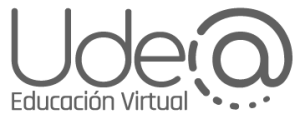CONS - OpenEstudio
Perfilado de sección
Perfilado de sección
-
History
Historia de OpenEstudio
La historia comienza en Australia en el año 2013 en 19th International Symposium on Electronic Art ISEA. Resistance is Futile, cuando los investigadores Esteban García e Isabel Cristina Restrepo se encontraron en el Panel Académico Latinoamericano e identificaron intereses comunes para el trabajo aplicado entre el arte y tecnología, a partir de herramientas de fácil acceso y con perspectivas interdisciplinares y grupales.
Más tarde, en el otoño de ese mismo año, se dio un nuevo encuentro con los investigadores en Purdue University, el cual permitió el relacionamiento con otros académicos y directivos de dicha Universidad y el planteamiento de una metáfora conceptual y creativa para proponer el intercambio académico, llamado en ese momento Open Studio/Estudio Abierto. Asimismo, se propuso una ruta que incluyó la gestión de recursos para articular dos espacios académicos, el del curso de verano de los estudiantes de Purdue y el de un taller complementario para los estudiantes de la Universidad de Antioquia.
De este encuentro en el año 2013 queda propuesto el intercambio OpenEstudio, rescatando el uso del ‘espanglish’ como un puente para el encuentro y diálogo creativo e investigativo. Esta primera ruta se definió en los siguientes términos:
Para el primer intercambio se partió de la idea de que a pesar de las 2467 millas (3970 kilómetros) que separan West Lafayette y Medellín, era posible construir un puente dialógico y creativo para conectar diferencias geográficas, culturales y sociales en torno a las artes y la tecnología, específicamente en los nuevos medios. La unión de los docentes y las instituciones permitió visualizar que, para la generación de un primer intercambio intercultural entre ambas universidades, era necesario plantear una propuesta académica que potenciara la experiencia en el ámbito del arte y la tecnología. En este sentido, se propuso el curso denominado Taller Complementario Open Studio-Estudio Abierto. Arte interactivo y Animación en 3D. Con este se propuso integrar la experiencia que el profesor García, de Purdue University, tenía en su trabajo en visualización interactiva con las experiencias que varios profesores e investigadores del grupo Hipertrópico, de la Facultad de Artes de la Universidad de Antioquia, tenían en arte digital y software libre para desarrollar proyectos interactivos con incidencia social. De esta forma, el curso se centraba en la generación de un espacio académico y creativo sobre la experiencia de viaje para la producción interactiva y en modelado en 3D con los softwares libres Processing y Blender.
Desde este momento, el relacionamiento a través de este intercambio ha permitido desarrollar tres versiones: 2014, 2015 y 2017, realizadas entre Purdue University y la Universidad de Antioquia. Actualmente, preparamos la versión 2021, en la cual se integra la Institución Universitaria ITM y se cuenta con el apoyo de la convocatoria Nexo Global, Partners of Americas (US Department of State/Minciencias), de la cual es beneficiario el proyecto en el 2020.
History of the Exchange
Australia 2013 - The story begins during the 19th International Symposium on Electronic Art ISEA. Resistance is Futile - when researchers, Esteba García and Isabel Cristina Restrepo, met at the Latin American Academic Panel, they realized the similarities in their interest: easily accessible technologies and the interdisciplinary/collective perspectives when applying it to art and technology.
Fast forward, the two researchers re-encountered during the fall of that same year now at Purdue University. This event allowed the relationship between other academics and directives from Purdue to result in the proposal of a conceptual and creative metaphor in favor of an academic exchange program called Open Studio/Estudio Abierto. In that same breath of ideas, it was also proposed that both universities could arrange two academic spaces with respective resources. A summer workshop for Purdue students and a complimentary workshop for the Universidad de Antioquia students.
Ever since this encounter in 2013, emphasizing the use of “Spanglish”, the OpenEstudio exchange program became a bridge between creative and investigative dialog from students and faculty from both institutions. The first route was defined with the following terms:
For the first interchange, regardless of 2467 miles / 3970 kilometers that separate West Lafayette and Medellín, it would be possible to build a creative dialogue to connect geographically sociocultural differences that surround art and technology - specifically in new mediums. The teacher union alongside the institutions set a precedent that, for the first generation of exchange students to succeed, it was necessary to propose an academic program that would enhance the experience between universities in the realm of art and technology. Open Studio/Estudio Abierto Arte interactivo y animación en 3D was the proposed complementary workshop. Professor García’s, from Purdue University, experience in interactive visualization in conjunction with the digital art and software at the Universidad de Antioquia Arts Faculty group, the Hipertrópico, allowed the development of interactive and social incidence projects. With an academic and creative space, the trip will fuel the creation of interactive production and 3D modeling using the Processing and Blender software.
Currently, this exchange has permitted the development of three installments where Purdue University and the Universidad de Antioquia partnered for this course. We are now preparing for the 2021 version in which the Insitución Universitaria ITM will be joining us alongside the support of, Nexo Global, Partners of Americas (US Department of State/COLCIENCIAS), the beneficiary of the 2021 project.
